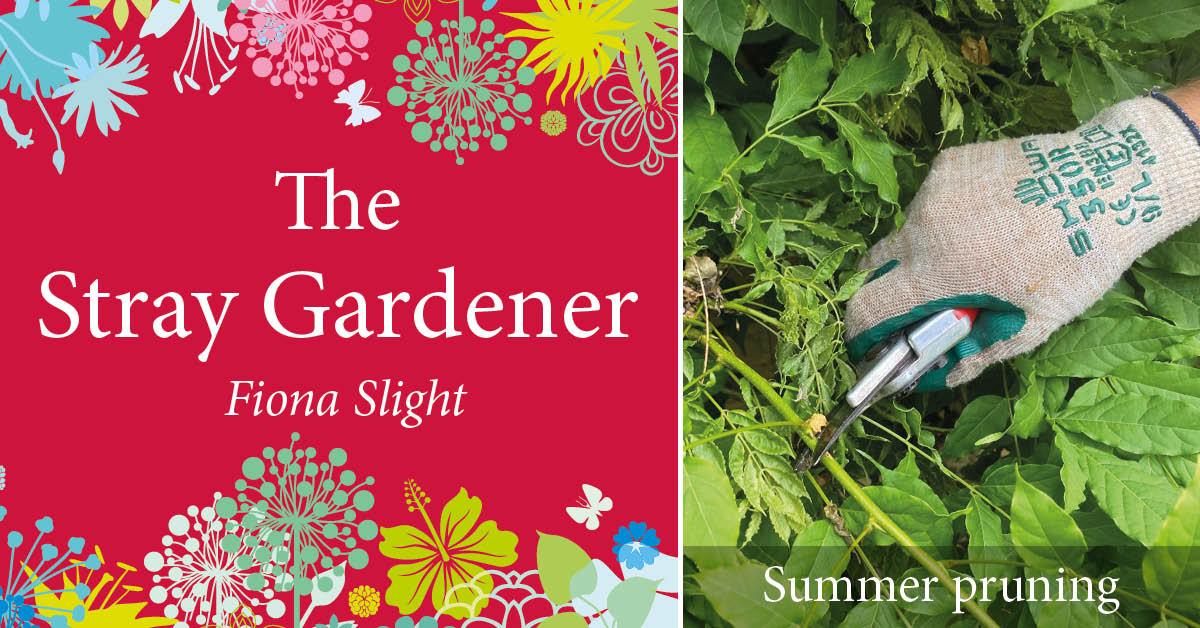Subscribe to trusted local news
In a time of both misinformation and too much information, quality journalism is more crucial than ever. By subscribing, you can help us get the story right.
- Subscription costs less than £1 a week with an annual plan.
Already a subscriber? Log in here.
01
Aug 2021
Stray Gardener: summer pruning... it's a snip!

 The Stray Gardener is written by Rudding Park’s Kitchen Gardener, Fiona Slight. Fiona has worked in horticulture for more than 30 years in the UK and abroad, and specialises in growing fruit and vegetables for fine dining. This month, Fiona explains what to prune this summer.
The Stray Gardener is written by Rudding Park’s Kitchen Gardener, Fiona Slight. Fiona has worked in horticulture for more than 30 years in the UK and abroad, and specialises in growing fruit and vegetables for fine dining. This month, Fiona explains what to prune this summer.
So, why do we need to do a bit of snipping in the summer? It has loads of good reasons including restricting the size of your plants to ensure they don’t take over, and promoting future flowers and fruits in the year to come. If you think that pruning is a mainly winter or spring job, think again!!
If you want to ensure a good crop of fruit in the next year, trees such as apples, crab apples, medlars (sometimes known as monkey’s bottom and other rude names!) and mulberries all produce a crop on short flowering spurs along the bottom half of branches. By cutting back the vigorous growth made in spring, you will encourage more productive growth to develop, this is especially important with trained fruit trees as these could also outgrow their supports if left unchecked.
The cherry and plum family (Prunus), are particularly prone to a disease called silver leaf. By pruning cherries in summer you can avoid infection as the fungal spores are more prevalent between September and May. Choose a dry sunny day to do this as it reduces the risk of infection even further.
Pruning encourages new growth. Cane fruits such as summer raspberries, blackberries and loganberries produce new canes each year, which will go on to fruit the following summer. Once they have finished fruiting, the old canes should be pruned out to make space for the new stems.
Climbing plants including honeysuckle, jasmine, star jasmine and wisteria can become overgrown and tangled by the end of the summer. Pruning the long soft growth back to three or four buds helps to promote flowering buds ready for the next spring. It is also a good time to look at any new shoots that could be trained in to take over older shoots that have started to become bare.
Pruning keeps shrubs in shape and prevents them becoming overgrown with the flowers produced high up in the plant and not always as floriferous as they could be after pruning. Cutting out the flowering stems once they have finished helps to produce new shoots lower down that will go on to flower the next year. Anything that flowers from early winter to late spring can be pruned like this, plants such as deutzia, forsythia, kerria, philadelphus and weigela.
Topiary and hedges can be pruned later on in the summer, so cut back the current season’s growth to maintain shape and size. Shrubs such as beech, hornbeam, box, leylandii, thuja, privet and laurel can all be pruned at this time. It is important to check the hedge or topiary first to ensure there are no active bird nests, especially early on in the summer. Some species may need more than one cut in the growing season, depending on how neat you want these plants to be. Just be careful to watch the weather when you cut: try and avoid hot, dry, sunny days as this can cause your trimmed topiary to get scorched. Conversely, damp, wet days can encourage fungal spores which could infect your plant, so try to stick to a dry, cloudy day if you can.
Have a look at the plants in your garden, are there any mentioned about that you think fall in to the summer pruning category? If so, give it a go!
Fiona's Five Top Tips for August
- Keep cropping your courgettes to stop them becoming marrows.
- Spend some time checking the ties on any trees you have and loosen if necessary to ensure they do not restrict the trunk.
- Water rhododendrons and azaleas in dry spells as this is the time when they start forming flower buds for next year.
- Support dahlias as flower buds form and start to get top heavy.
- If the weather gets hot, set your lawn mower at a slightly higher level to help keep your lawn greener.
0